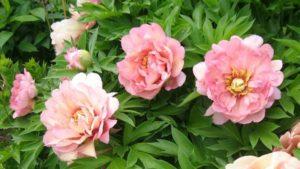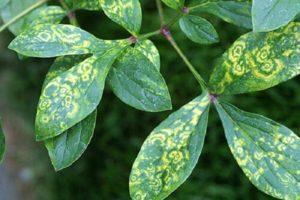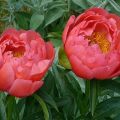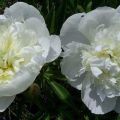Rules for planting and caring for a tree peony, growing and why it does not bloom
Treelike peony bushes are able to decorate any suburban and personal plot. Large spherical flowers of bright shades bloom on stable stems. Treelike peonies have more than several thousand hybrid varieties that are successfully cultivated in Asia, Europe and Southeast America. Gardeners collect rare varieties and get unusual varieties by self-crossing.
Description and features
The tree peony is a deciduous shrub that can grow up to 2 meters
- stems: erect, partly stiff;
- leaves: attached on long petioles to the stem, have a feathery shape, the shade depends on the variety and can vary from green to dark green;
- flowers: located on the bushes one at a time, growing up to 30 centimeters in diameter, each flower has 5 to 12 petals, the shade of the petals depends on the variety.
Breeding history
The tree peony began its existence in the provinces of China. The wild flower mainly grew on the foothills, inhabited the mountain slopes located above the sea waters.
From the beginning of the 5th century, the bush peony has become a symbol of harmony, beauty, vitality for the Chinese. Wild peonies are protected by the state and are included in the list of rare and useful plants.
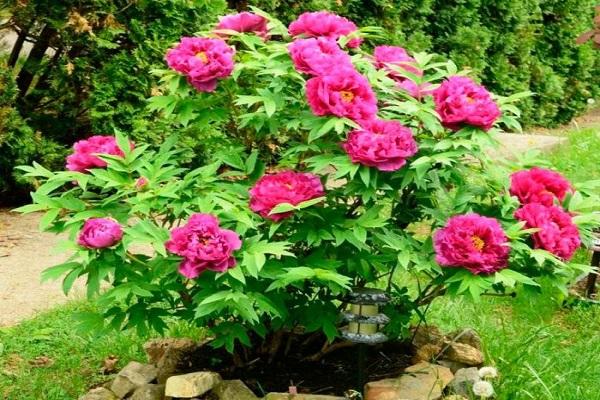
What is different from herbaceous
The tree peony is often confused with the herbaceous one. In fact, externally similar cultures have significant differences.
| Tree-like | Herbaceous |
| Lignification of shoots | Soft green stems |
| The height of the bush reaches 2 meters | Grows up to 1 meter |
| The diameter of the flowers can reach 30 centimeters | Flowers grow up to 20 centimeters |
| Does not require pinching of the first buds to stimulate flowering | Pinching is mandatory |
| The shades of the petals can be two-component | Shades of colors can be enumerated: range from pink, white to red, purple |
| Can grow in one place for several decades | Duration of existence - about 3-4 years |
Kinds
The classification of peonies includes the presence of the main species. They are divided according to their origin and specific features.
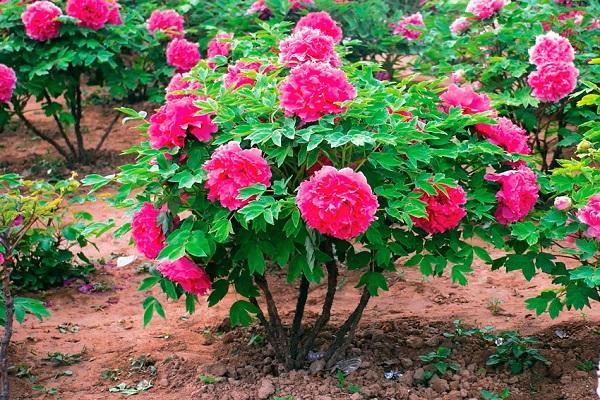
Sino-European
The varieties of these species are characterized by the presence of large double-type buds. The flowers are heavy and often sag under their own weight.
Japanese
It is a species that combines varieties with large but light flowers. The petals can be translucent and resemble gauze. The shades of the varieties of the Japanese species are striking in their variety.
Hybrid
Varieties of this species are represented by a variety of shrubs with light to heavy flowers. They can be double and semi-double, bloom at different times of the season and exhibit different adaptive properties.

Popular varieties
The tree peony is successfully cultivated all over the world. Some varieties are especially famous and grow successfully in Asia, Europe and America.
The Qiao sisters
It is the most famous variety of tree peonies. It was bred by Chinese breeders, but no information about the authors has survived. The bush has dark green, dense leaves and grows up to 1.5 meters. The diameter of the flowers is 17-19 centimeters. The peculiarity of the variety lies in the color of the petals: the center of the flower is bright red, towards the tips the color becomes pale pink.
Sapphire
The bush grows up to 1.5 meters, the lateral shoots are spread out to the sides, the petals are painted in pale pink or lavender. The middle of the bud remains yellow. The bush blooms throughout June.
Coral altar
The leaves on the stems are densely arranged, the flower has sharp tips and resembles a carnation in structure. The petals range in color from coral to light cream. The flower diameter is 18 centimeters.
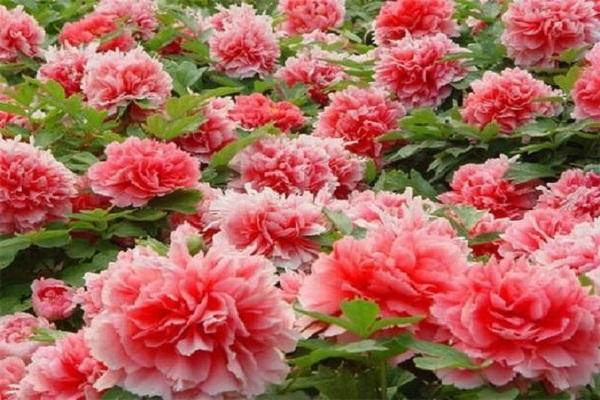
Green Jade
A unique flower with a shade of petals. The pale green buds can reach 15-17 centimeters in diameter.
Red giant
The second name of the variety is the Silk Road. Bushes reach 1.5 meters. Flowers are red or dark pink in color, crown type. The upper petals stretch up, the lower ones go down.
Yellow
Small bushes of tree-like yellow peonies stretch up to 1 meter. Flowers are small, with thin petals, grow up to 15 centimeters, light.
Kinko
The variety belongs to the imperial group. The petals are reminiscent of a tea rose in color and shape. The diameter of one bud is about 17 centimeters.
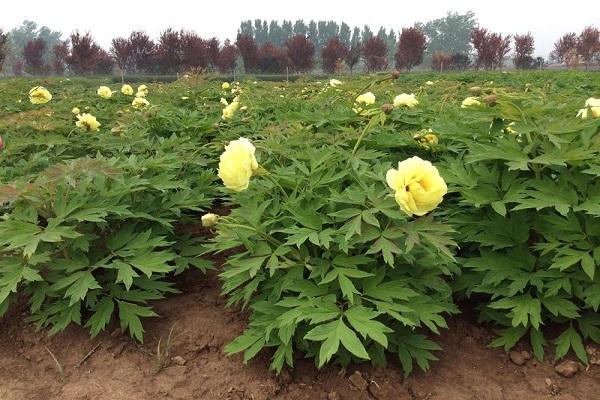
White phoenix
Many growers believe that the peony of this variety looks like a white lotus. The snow-white buds turn slightly pink in the center, but over time the shade disappears. Many peonies do not bloom on one bush - about 10 pieces.
Violet
The deep purple shade of the buds makes the flower unusual. Many peony gatherers purchase this variety for their collection. The bushes reach 1.5 meters, the flower diameter is 20-25 centimeters.
Black Panther
The bush grows up to 2 meters, the diameter of the buds is up to 30 centimeters. The color of the petals becomes maroon by the end of flowering. The yellow center makes it unusual.
Gold placer
The variety is of the double-flowered type. Openwork petals of yellow-orange color are bordered by a pink thin stripe.
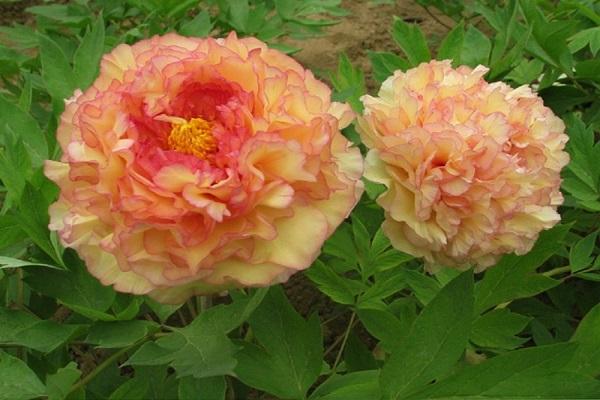
White jade
The classic type of Japanese species. A bush with light snow-white flowers grows up to 1.5 meters.
Shima Nishiki
Semi-double peony with a flower diameter of 15 to 20 centimeters. The shade of the petals can be red, pink, white or two-tone.
Green beans
Up to 70 buds appear on one bush per season. The flowering period lasts only 1.5 weeks. The flower petals take on a light green hue.
Ghost dew
The bush grows up to 2 meters, the flowers are large and heavy.After the rain, they wilt under the weight of the drops. The color of the petals is lilac-pink, uniform.
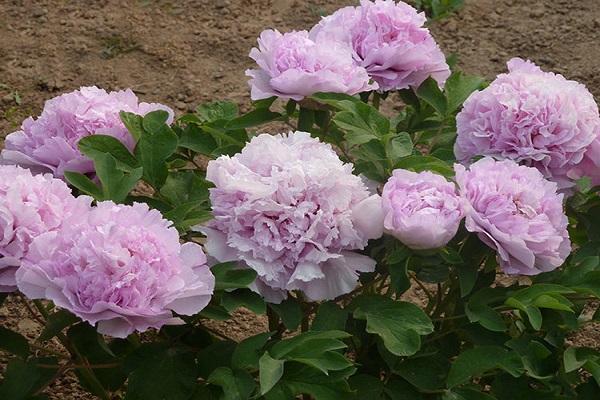
Scarlet Sails
The petals of the crown-type buds are bright red. The bush reaches 2 meters, if you do not pinch it, it grows in width.
Twins
Semi-double pink peonies. The flower diameter reaches 15 centimeters. Flowering lasts about a month.
Tender spring
Petals of a light pink shade are characterized by increased corrugation. The bud is densely packed with petals, heavy and large. The bush reaches 2 meters, flowering lasts more than 2 weeks.

Landing in open ground
The growth and flowering of a tree peony depends on the correct and timely planting. This culture is able to grow on the site for many years, so it is necessary to choose the right place and take into account the peculiarities of the flower.
Timing
Gardeners consider the autumn months to be the best option for planting. In autumn, the root system of a peony is able to acquire the necessary suction hairs, which play an important role in the general condition of the root system.
If the seedling was bought in the summer, then, subject to certain nuances, the peony can be planted on an open ground immediately after purchase.
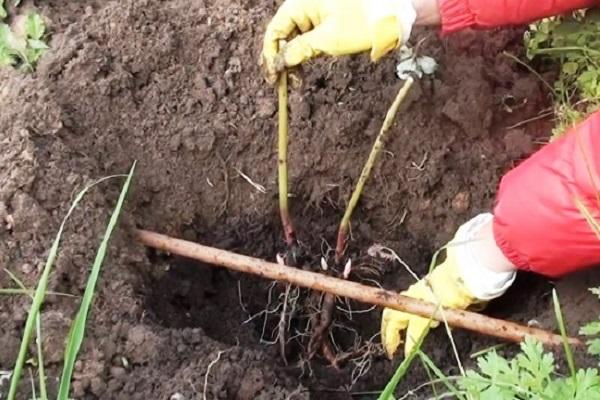
Seat selection
When choosing a place for a peony, several rules are followed:
- lack of through winds;
- slight shading of the area with the necessary stable supply of sunlight for the peony;
- correctly selected neighbors that will allow the bushes to grow unhindered.
Soil preparation
For peonies, choose a light, loose soil with the necessary drainage layer. The acidity level of the soil for pions is constantly kept under control, it should be in the range from 6 to 6.5 ph.
How to prepare seeds
When planting by seed, the planting material is prepared in advance. The seeds must go through several successive stages:
- germination in wet sand;
- stratification or exposure to different temperatures for 4-5 days;
- soaking before planting.
In order to avoid infection, the seeds are recommended to be additionally disinfected with a manganese solution.
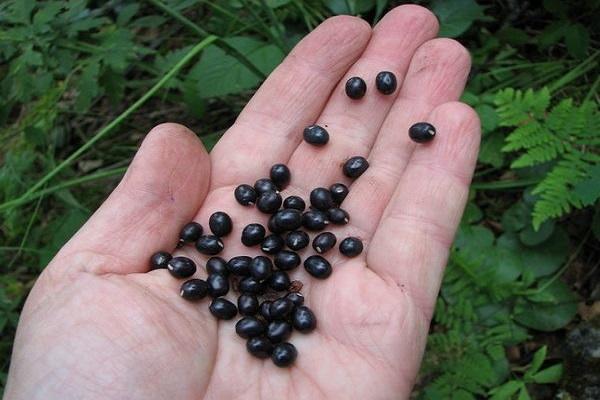
Landing scheme
The minimum distance between bushes should be about 1 meter. There are varieties that are known for abundant overgrowth of bushes, for them the distance is increased to 120 centimeters.
Care and cultivation
After planting, the plant activates its adaptive forces. Cultural needs should be taken into account when leaving.

Watering
The peculiarity of the irrigation technique depends on the flowering. Before the formation of buds, the bush is watered abundantly, with the beginning of flowering, the number of waterings is significantly reduced.
Weeding and loosening
After abundant watering, the earth is loosened. This protects against weeds and promotes additional air saturation.
Mulching
To prevent the spread of weeds, the soil is mulched. To do this, choose fresh grass, needles or sawdust.
Top dressing
At the flowering stage, the plant needs additional feeding. To do this, choose liquid mixtures with a high content of potassium and phosphorus. While he is growing, increasing the green mass, he needs nitrogen-containing complexes.
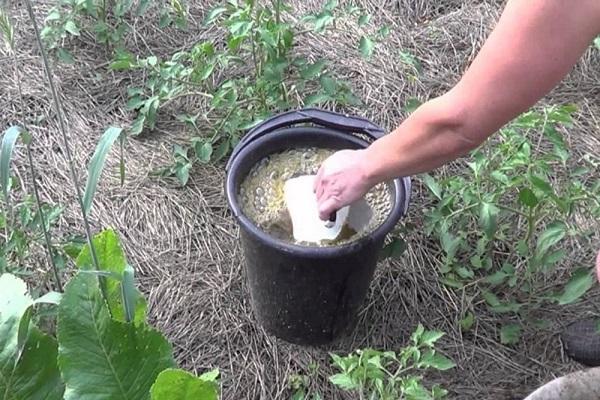
Pruning features
When flowering, the buds are removed. In this way, further flowering is stimulated. Before wintering, the bushes are pruned, removing weak and damaged shoots.
Transfer
Tree peonies are planted in a place where they will grow constantly. After forced transplants, the plant can be sick for about 2 years, so it is not recommended to transfer it.
Reproduction
For breeding peonies, choose one of the methods. The time depends on the condition of the bush.
Dividing the bush
The peony multiplies easily by division. The root system of the overgrown bush is dug out of the soil, part of it is disconnected with a sharp knife, then the mother plant is returned to the hole. The separated plant is transplanted as an independent seedling.
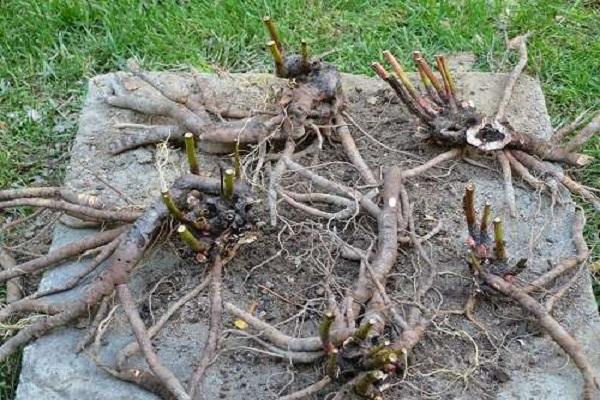
Cuttings
Peonies are propagated by cuttings in autumn. Throughout the winter, cuttings take root at home. In spring or summer, they are planted in open ground areas.
Layers
This method is suitable for breeding a certain variety. A lower shoot is selected on a bush, cut and bent to the ground, then sprinkled with soil. In this way, it will take root throughout the spring and summer, and in the fall it can be transplanted as a separate plant.
Vaccination
This method is suitable for creating a hybrid variety. A part of the root is used, it is cracked, the scion is inserted into the break and fastened with garden var. The structure is rooted, when processes appear, dead parts are removed and the seedling is grown.
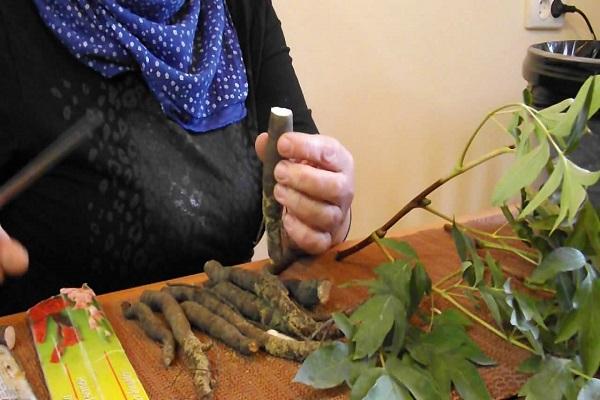
Pests and diseases
Treelike peonies have average resistance to diseases and pests. The main danger is represented by fungal diseases.
Gray rot
It affects the bush with excessive soil moisture. The leaves turn yellow, covered with weeping spots. For treatment, fungicides are used, and the soil is additionally mulched.
Brown spot
Fungal infection, due to which the leaf plates turn brown and the buds fall off without waiting for flowering. Affected bushes are treated with antiseptics, fungicides.
Rust
The disease can appear after the rainy season due to dampness. Treatment with tobacco solution helps to restore a healthy look to the bush.
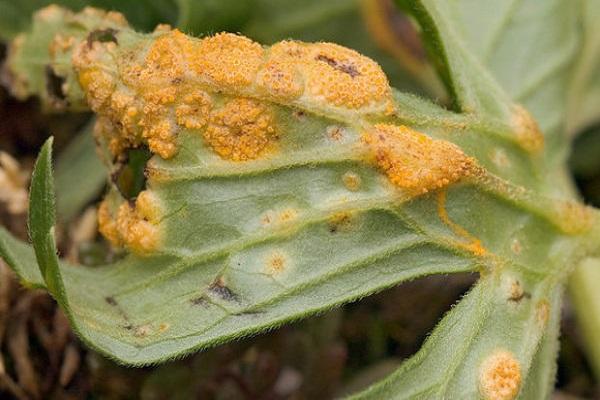
Foliage ring mosaic
The virus is carried by insects, so at the stage of prevention, you should fight them. Affected plants do not respond to treatment and must be destroyed. The disease develops slowly. Mosaic rings appear on the leaves, the flowers become smaller, the leaves turn yellow.
Preparing for wintering after flowering
In winter, peonies need additional shelter during the first years of their existence. They are covered with industrial material, tightened with twine.
Why does not it bloom
Peonies are not considered a capricious culture, but if the rules of care are violated, the flower will surely respond with a lack of flowering. It is important to take into account the basic needs of culture, then it will decorate the site for many years.
Improper care
Yellowing of the leaves indicates a change in the acidity of the soil. Dolomite flour is added to stabilize the soil.

Warning! The formation of a hard crust on the soil indicates that loosening is not enough for the peonies.
Wrong choice of landing site
Not blooming can be a reaction to a lack of space. Peonies do not like drafts, so they will be uncomfortable in an open area on the north side.
Direct sunlight can fade flowers and cause sunburn on the sheets.
Too young or too old plant
Peonies after planting can slow down their growth rate. They can grow slowly over several seasons. This applies to the aboveground part. Unlike herbaceous peonies, tree peonies first build up the root system.
Older plants also slow down their growth rates because they need a longer rest period than before.
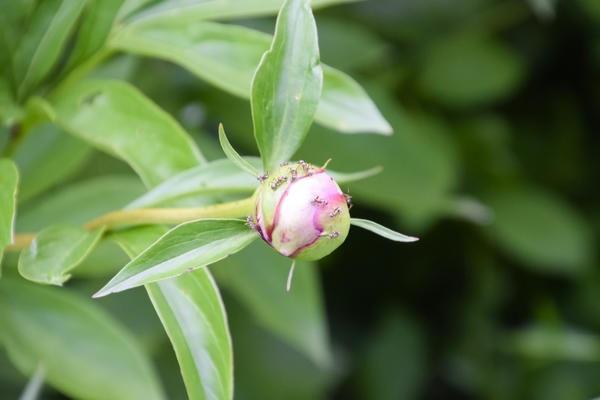
Doesn't like a transplant
Peonies find it difficult to tolerate the change of a permanent place of growth, so growers advise to immediately choose a suitable site. If you have to move the bush to another place, then it is necessary to additionally feed it with superphosphates and potassium fertilizers during the summer period.
Watering mode
One of the reasons may be a violation of watering. In the spring, the bush needs abundant watering. In summer, it is watered only when the topsoil is dry.
How to choose the right seedling
Peony seedlings are purchased in special nurseries, where the plant is brought to a certain age, when it can be planted in open ground. Main selection criteria:
- stems should be firm, even and lignified;
- the root system is developed, a full-fledged bud develops at the base of each stem;
- there is no plaque on the roots, the sections are tightened, without wet marks.
A correctly chosen seedling will guarantee the successful growth of a lush, abundantly flowering shrub.
